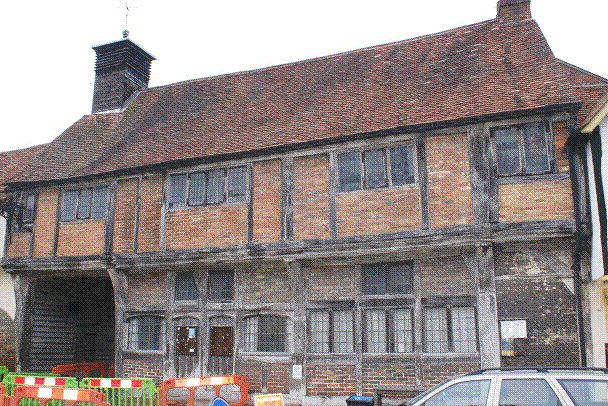
|
|
|
|
|
|
|
|
|
|
|
|
|
|
|
|
|
|
|
|
|
|
|
|
|
|
|
|
|
|
Church Loft, West Wycombe
PROJECT 2012-1 : OCTOBER 2012
AIM: To produce a measured survey of Church Loft as part of a National Trust refurbishment project for the village.
PROJECT TEAM: Robin Carr, Sue Fox, Andrew Muir, Karen Pepler, Cathy Soughton, Jenny Vince, Heather Wallace, Nick Williams
COORDINATOR: Gary Marshall (Regional Archaeologist for the National Trust)
 |
The 15th-century Church Loft, which is used today as a parish hall. |
Church Loft is a 15th-century meeting house, which is listed Grade 2* and a key building in the village of West Wycombe. It is a two-story timber-framed building of four bays, with an offset carriage arch which provides access into Church Lane, running north from the High Street towards the church.
The buiulding was known as Church House in the 17th century and would have housed the vestry court. On the ground floor there were four small rooms, which may have been accommodation for pilgrims travelling between Oxford and London or small shop units.
Members of the group spent two afternoon sessions early in 2013 on a detailed measured survey of the building. The final scale drawings are in preparation.
This Historic Buildings Group project is part of a much larger operation by the National Trust to investigate and refurbish all its properties in the village. The Trust took ownership of a large proportion of the village when the 18th-century mansion of West Wycombe Park was given to them by Sir John Dashwood.
DATING THE BUILDING
The Archaeological Society also funded a tree-ring dating survey of the Church Loft, in order to establish a more exact construction date for the building.
The report, completed by Dr Dan Miles of the Oxford Dendrochronology Laboratory, concludes that samples from the timbers ‘confirm that the entire roof was constructed in or within a year or two of 1465. There is no reason to think that the timber frame below is not of the same period of construction.’